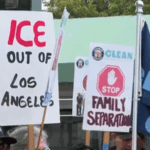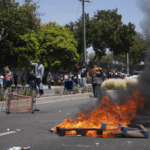Protests, Troops, and Legal Drama: Breaking Down Trump’s Move
U.S. President Donald Trump’s decision to deploy National Guard troops to California has ignited fiery debates over presidential power. After days of protests against immigration raids, Trump labeled the demonstrations a potential “form of rebellion,” claiming they disrupted federal law enforcement. But can he legally send troops to handle civil unrest? Let’s unpack this. 🔍
The Military Response Heats Up
Defense Secretary Pete Hegseth mobilized 700 active-duty Marines this week, escalating the federal response. Meanwhile, California Governor Gavin Newsom slammed the move as “unlawful,” filing a lawsuit to regain control of the state’s National Guard. The clash highlights a classic tension: federal authority vs. states’ rights. 🤝⚖️
What Does U.S. Law Say?
The Posse Comitatus Act generally bars using federal troops for domestic policing. But exceptions exist, like the Insurrection Act, which lets presidents deploy forces to suppress “rebellion” if states fail to act. Critics argue Trump’s framing of protests as “rebellion” stretches legal boundaries. Legal experts are split—some call it a power play, others a constitutional gray zone. 📜💥
Why It Matters for You
This isn’t just political theater—it’s about how far executive power can go. With protests spreading, the outcome could set precedents for future crises. Stay tuned as courts weigh in, and keep those 📱 notifications on. 🌍✨
Reference(s):
Explainer: Does U.S. law allow Trump to send troops to quell protests?
cgtn.com








